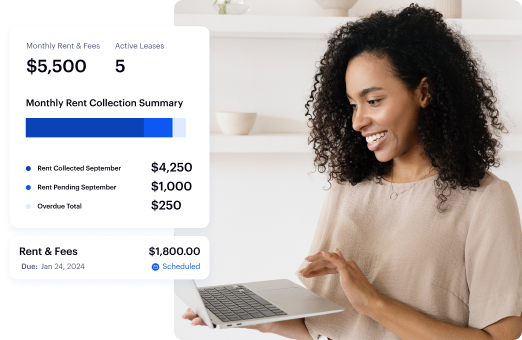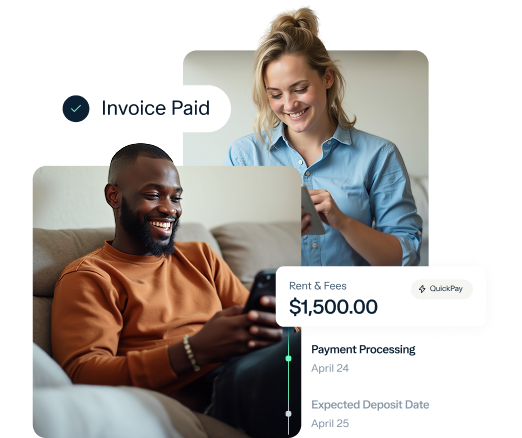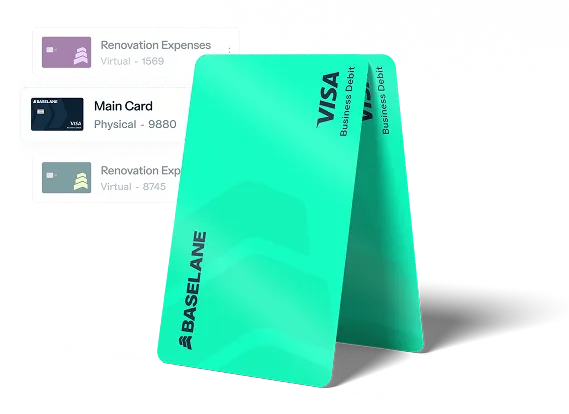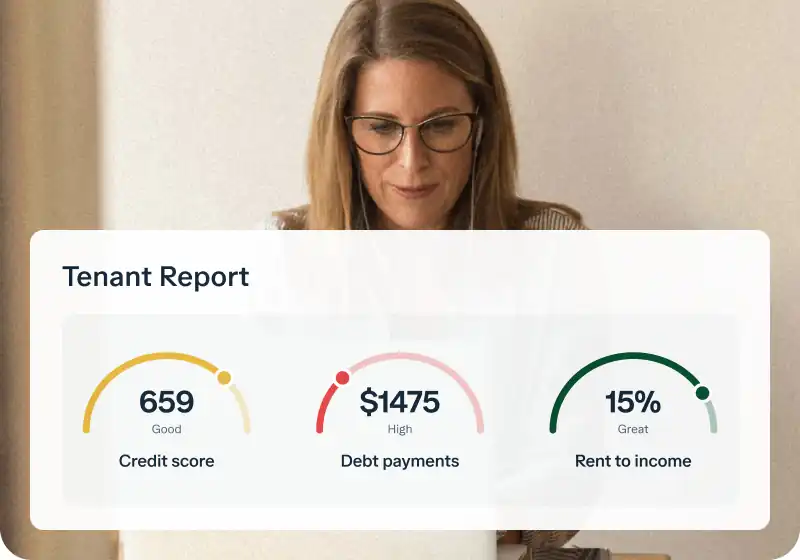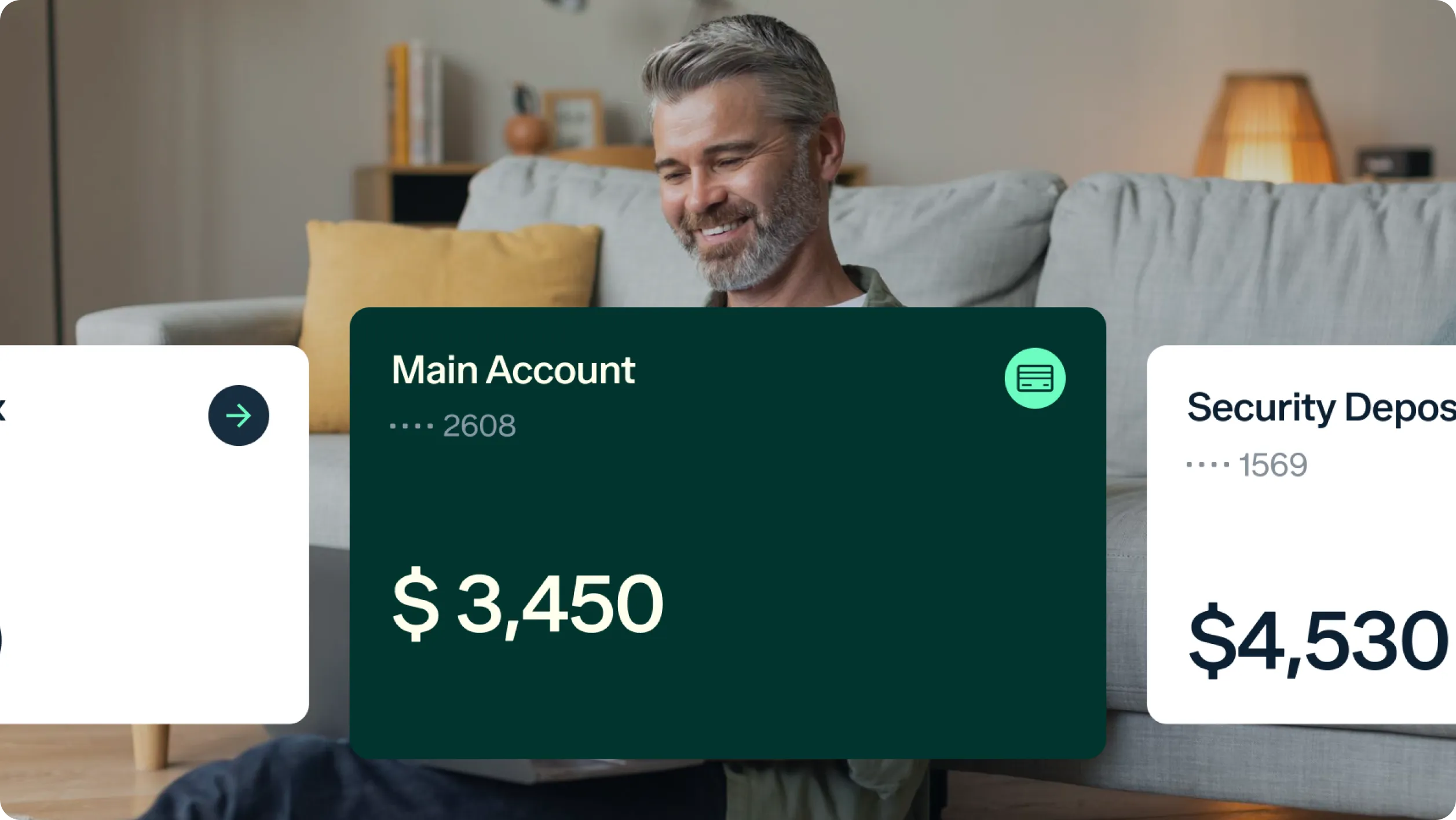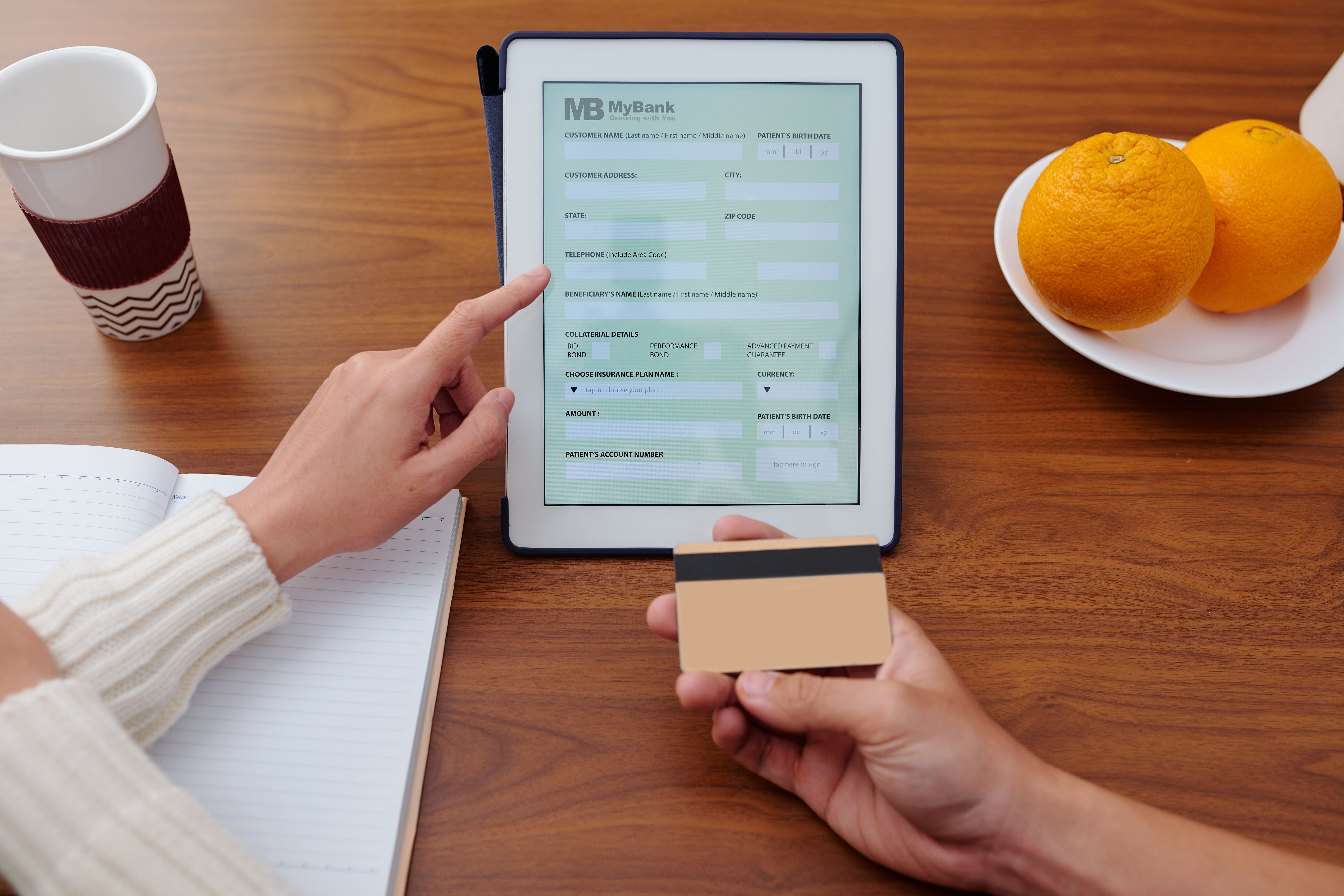As a landlord, you juggle a steady stream of expenses—utilities, insurance premiums, loan payments, and professional services. Mailing checks and one-off wires create friction, delays, and extra fees. Automated Clearing House (ACH) bill payment replaces these manual processes with a simple, secure flow so you can pay bills with ACH on time, every time.
In this guide, we’ll explain how to send ACH bill payments for property expenses, associated costs, and best practices to achieve operational excellence.
Key takeaways
- ACH bill payments are a low-cost, fast, and secure mode of payment for a landlord.
- ACH is best for one-off or recurring payments such as utilities, insurance, or mortgage payments.
- Compared to wire transfers or checks, ACH transfer fees are inexpensive—they can be as little as $0.10.
- Standard ACH processing time is 1-3 business days, but processing can be done on the same day when opting for instant services.
What is ACH bill payment for landlords?
ACH is the bank-to-bank network that moves money electronically inside the U.S. For landlords, ACH bill payment is the most efficient way to send funds to vendors and service providers, landscapers, plumbers, supers, cleaners, insurance carriers, and more.
ACH payment typically takes 1-3 business days with a flat per-transaction fee between $0.50–$2.00. By paying a few dollars extra per transaction, you can reduce the duration to one day.
Because ACH is low-cost at scale, it’s ideal for recurring bills and vendor networks. You can choose to absorb the small fee to keep vendors on rails. When budgeting, consider the total expense stack across your operation, management, maintenance, taxes, insurance, and property managers' charges, and plan your disbursements against projected annual rent receipts.
Benefits of using ACH for bill payments
If you’re considering ACH for bill payments, there are various advantages.
- Low cost: ACH fees are usually a small flat amount, often under $2, versus percentage fees for cards or high flat fees for wires. Across dozens of bills per month, that compounds into real savings.
- Automation: You can schedule recurring payouts for Homeowner Association (HOA) dues, utilities, and routine service contracts. With ACH billing services, automation means fewer misses, fewer late charges, and less follow-up.
- Security & auditability: Payments travel on a secure banking rail and create a digital paper trail, vital for bookkeeping, audits, and year-end tax packages.
- Cash-flow predictability: With scheduled ACH, you’ll know when funds leave your account, helping you sequence projects and keep reserves healthy. If timing is tight, you can send money with ACH on a date that aligns with expected inflows.
How to send ACH bill payment: Step-by-step guide
Here’s a practical process you can use today, whether you’re paying a roofer or your HOA.
Step 1: Collect payee information
Collect vendor legal name, routing number, account number, and account type (checking/savings) if the relationship is recurring. Secure written permission for recurring debits/credits through your platform’s form.
Step 2: Choose your tool
There are three common paths to send ACH payment.
- Bank bill pay (native): Great for simplicity. Log in, add payees, and send money with ACH. Downsides: limited approval workflows, weaker property-level reporting.
- Integrated landlord platform: Banking + payments + bookkeeping. Strong categorization, property tagging, document storage, and recurring rules, all inside one ACH bill pay service. This is where ACH billing truly shines for landlords who want fewer tabs and stronger records.
- High-volume ACH billing services: If you manage multiple doors or process large vendor batches (e.g., during peak seasons), specialized ACH billing services offer bulk uploads, multi-approval features, and audit log capabilities.
To pick the right option, compare the cost associated with each method, Same-Day/instant availability, reconciliation experience, sub-accounts, user permissions, and fraud controls. If you already evaluate software for collections (e.g., rent collection apps or the best way to collect rent from tenants), apply the same rigor to bill-pay tooling.
Step 3: Configure the payment
Enter the vendor info, invoice #, amount, and memo. If monthly, set it to recur. This is the nuts and bolts of how to send ACH payment: use saved payees, templates, and schedules to reduce error risk.
Step 4: Approve & schedule
Select the debit date based on your cash-flow calendar. If timing is critical, check for same-day ACH or the option to send ACH payment instantly (more on this below).
Step 5: Confirm & reconcile
After submission, confirm the transaction ID. When the payment posts, reconcile it in your books. If you track both income and expenses together, a structured rent roll view can help you see cash-in and cash-out by unit or property.
ACH types: Standard, same-day, and “instant” ACH
If slow receivables create crunches, revisit processes that drive predictable cash-in (see: rent considered late, collect unpaid rent) so outgoing ACH doesn’t outpace inflows.
ACH payment issues: Common rejection codes and how to solve them
Your ACH payment may not go through for several reasons. At the time of writing, the National Automated Clearing House Association (NACHA) has identified 85 reasons for this. You can find the entire list of ACH rejected codes here (Note: Not all of the rejection codes apply to the bill payment).
We'll discuss the three most common errors you may encounter and how to address them.
ACH bill payment best practices for operational excellence
Here are our best practices for achieving operational excellence with ACH payments in your rental business.
Separate funds with a smart account structure
Avoid commingling your funds by having a separate account dedicated to each purpose or property. This’ll help you make payments from the right account and keep track of transactions, helping you during tax season.
Here is a structure you can copy:
- Establish a dedicated rental bank account: Open a separate business bank account for your rental property and run all transactions through that.
- Use sub-accounts for organization: If you have multiple properties or a growing portfolio, use modern banking platforms like Baselane that offer unlimited free virtual accounts or sub-accounts. You can dedicate each account to a specific expense type: operating expenses, maintenance reserves, or security deposits.
Automate recurring payments to save time
Automate predictable and recurring payments to ensure on-time payments, which will help you build your credit and maintain good vendor relations.
For example, with Baselane, you can schedule bills like HOA fees, utilities, pest control, and property insurance and remain stress-free. Our platform handles automatic payments without requiring additional work from your end.
Maintain vendor transparency
Vendors appreciate clear and consistent communication on payment cadence and cutoffs. Providing this transparency reduces support tickets and eliminates time-consuming rework for both sides.
- Share your payment calendar: Let your regular vendors and partners know your standard submission cutoffs and payment processing times.
- Keep all compliance documents handy: Save essential compliance documents like W-9 forms, Certificates of Insurance (COIs), and contracts right next to their payment profiles.
- Use consistent memos: The memo line is your best friend for clean bookkeeping. Always use a consistent format for internal tracking, such as: "123 Main St – Unit 2 – Leak Remediation – Inv #4471."
Reconcile and tag transactions religiously
Automation only works if you verify that the data is flowing correctly. For accurate reports, streamlined taxes, and real-time cash flow visibility, match your bank activity to your books regularly. To do this, match transaction postings at least weekly and formally close your books monthly. If you use a banking platform like Baselene, it automatically tags transactions by property, vendor, and Schedule E expense category and generates instant financial reports.
Strategically plan capital and reserves
If you’re in the process of scaling your real estate portfolio, make sure your ACH strategy supports your growth model.
- Fund your reserves systematically: Use your sub-accounts to automatically transfer a percentage of rental income into your capital improvements and maintenance reserve accounts.
- Support the BRRRR strategy: If you're scaling using the Buy, Rehab, Rent, Refinance, Repeat (BRRRR) method, your ACH payment calendar must reflect tighter construction timelines and milestone-based draws for contractors. Having separate, well-managed accounts for each project is paramount to tracking costs and maximizing your future refinance.
Send your first payment with ACH
ACH is one of the best ways to make one-off or recurring payments, as it allows for automated transactions, and the processing fees are extremely low.
To make this process even smoother and structured, use modern banking platforms that offer multiple bank accounts and built-in support for ACH payments. Baselane, for example, helps you tidy up your transactions, send or receive ACH payments, and keep track of cash flow. Get started with Baselane today!
FAQs
What is an ACH bill payment?
An electronic transfer through the ACH network from your bank to a vendor’s bank. For landlords, ACH bill payment is ideal for routine, higher-ticket property expenses.
How do I pay bills with ACH?
Through your bank portal or a landlord-focused ACH bill pay service. Add the payee, amount, and date, then submit. That’s the essence of how to pay with ACH.
How do I send ACH payment online?
Log in to your bank or platform, add payee details, and schedule. Most systems let you send ACH payment online from any device.
Can I send money with ACH urgently?
Yes, use same-day ACH or providers that let you send money via ACH instantly. Just weigh the rush fee against the project cost or delay.
When should I choose wires over ACH?
Use wires for international or time-critical transfers when ACH “instant” isn’t fast enough or the payee requires a wire.
What if a payment fails?
Confirm routing/account numbers, check bank cutoffs, and resubmit. For persistent issues, contact support. If receivables slip, align disbursements with your calendar and review rent considered late and collect unpaid rent processes.






